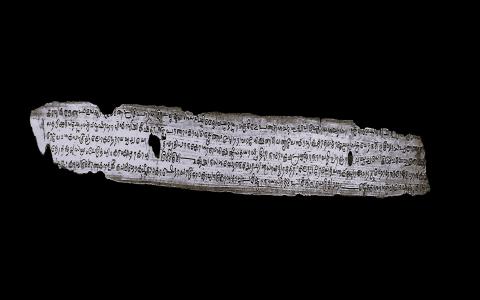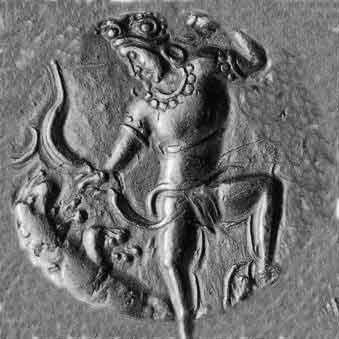June 2024

Madhyama-vyāyoga, Dūta-vākya, Dūta-ghaṭotkaca, Karṇa-bhāra, and Ūru-bhaṅga are the other plays authored by Bhāsa based on the Mahābhārata. It is hard to say if there were more plays in the Bhāsa-nāṭaka-cakra. We have been able to place our hands on only these for now. In some sense, we can say that the cakra is complete with these. The Mahābhārata is the story of the kṣāttra of the Pāṇḍavas and Kauravas. From a poetic perspective, the yuddha-...

कालिदास ने अश्वघोष के कथ्य का रचनात्मक तथा सकारात्मक सुधारण किया था। समुद्रगुप्त ने भी यही सुधारण अशोक के संबंध में किया। हर किसी को इसे रचनात्मक सुधारण के रुप में समझने की आवश्यकता है। अशोक-कानिष्क – अश्वघोष की त्रयी तथा समुद्रगुप्त – चन्द्रगुप्त द्वितीय – कालिदास की तुलना से लाभान्वित हो सकते है। जिस प्रकार अश्वघोष अपने पश्चातवर्त्ती कवियों के लिए आदर्श न बन सके वैसे ही अशोक और कानिष्क भी अपने बाद के किसी बडे सम्राट के आदर्श नहीं बन पाये। जब क...

Bhakti-Karma-Jñāna
Our philosophical literature is replete with analyses about the superiority of either one of bhakti, karma or jñāna. This also features as one of the strongest grounds of arguments among the three matas. My belief is that this is an unnecessary and fruitless controversy. Even though the three means — bhakti, jñāna and karma appear different, there is no doubt that the basis for all the three is the same. The substance that’s...

Kṣemendra
Kṣemendra was a man of many talents who straddled the realms of śāstra and kāvya. Although he composed several works in both these genres, his attainments as a poet outshine his scholarly contribution. Kṣemendra’s thoughts on literary aesthetics embedded in poetic works, though not pathbreaking, have an intrinsic value as the utterances of a prolific author. Let us examine some.
The poet communicates his aesthetic intent at the...

Naranappa’s household account
Three to four years had passed by then. During this period there was no occasion for Naranappa and Seshagiriappa to meet. Thereafter in Byrakur cholera epidemic cropped up. One among the firsts to succumb to it was Naranappa’s elder son Venkataramanaiah. He was about fifteen or sixteen years of age then. He was married, but his wife had not yet entered the family. Venkataramanaiah was well known to be capable and of...

2. The Author
2.1. Lineage, Teachers
Sāyaṇācārya was the second son of a pious brāhmaṇa couple, Śrīmatī and Māyaṇa. He belonged to the Bhāradvāja-gotra, Bodhāyana-sūtra and Yajuśśākhā. Traditional belief holds that Sāyaṇācārya’s family hailed from the Hoysaḻa-karṇāṭaka sect of brāhmaṇas. People of this denomination were largely concentrated in South-western Karnataka, in districts such as Hassan, Shimoga and Chikmagalur in the Malnad region.[1...

[We take great pleasure in commencing a series on Alaṅkāra-sudhānidhi, a Sanskrit treatise on Poetics authored by Sāyaṇācārya. The text is critically edited for the first time by Śatāvadhānī Dr. R Ganesh and Shashi Kiran B N, and will be published by the Oriental Research Institute, Mysuru. This series constitutes a major portion of the editors’ introduction to Alaṅkāra-sudhānidhi. We thank Dr. D P Madhusudan Acharya, the Director of Oriental...

Continued from the previous part ...
Virāṭa, Uttara, Pāṇḍavas and Abhimanyu constitute the third group of people. It is almost impossible to undertake an exclusive study of their characters, values, and the episodes associated with them; their nature and character are closely knit with each others. Abhimanyu’s character is noteworthy and here is a small extract from the drama.
Bhīma carries him to Virāṭa’s court and begins speaking about the boy...

जब नाग वंश के लोग अत्यंत शक्ति शाली हो गये थे तथा सनातन धर्म के लिए संकट उपस्थित कर रहे थे तो समुद्रगुप्त ने उन्हे ठण्ड़ा कर सौम्य प्रत्यायन द्वारा प्रभावित करते हुए उन्हे सनातन धर्म के महत्त्व को समझाया जिसके फलस्वरुप नागर ब्राह्मणों का उदय हुआ।
मनुस्मृति तथा अन्य ग्रंथों में जिस समन्वयता का वर्णन है वह गुप्त काल में थी। समुद्रगुप्त की यह विशेषता रही कि उसने जिन भी राजाओं को हराया, उनसे उनका राज्य न अधीन कर पुनः उन्हे ही शासक बनाया। ऐसा प्रतीत...

Adhyāropa-Apavāda[1]
When we have to explain a completely unknown entity to someone, we first try to describe a thing he is familiar with, and at least partially resembles the entity in question. Once the familiar thing is described, we show the differences between the intermediate thing from the original entity we set out to describe. This method of teaching is called adhyāropa-apavāda. Adhyāropa is to superimpose on an object certain...
